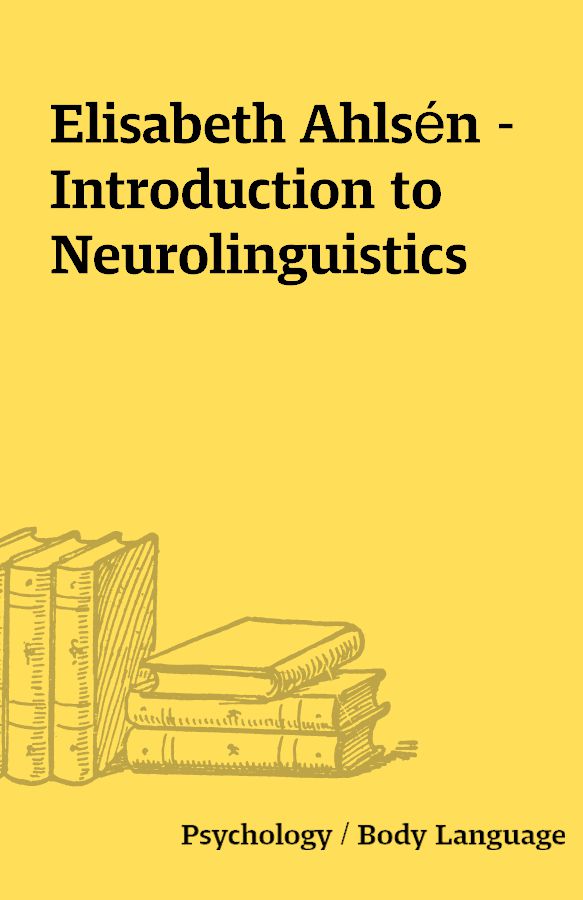Elisabeth Ahlsén – Introduction to Neurolinguistics
Introduction to Neurolinguistics.pdf
[1 eBook – PDF]
Description
With so much interest here in Hypnosis NLP etc here, I thought that this book would be useful to understand the connection of the brain, brain function and language.From Amazon.comIntroduction to Neurolinguistics (Hardcover)by Elisabeth Ahlsen (Author)No customer reviews yet. Be the first.List Price: $158.00# Hardcover: 212 pages# Publisher: John Benjamins Pub Co (July 19, 2006)# Language: English# ISBN-10: 9027232334# ISBN-13: 978-9027232335From the introductionThis book is a basic introduction to neurolinguistics, intended for anybody whowants to acquire a grounding in the field. It was written for students of linguistics andcommunication disorders, but students of psychology, neuroscience and other disciplineswill also find it valuable. It can be used as coursebook for introductory coursesor as a source of information on specific topics in neurolinguistics. The only prerequisitefor using it is a basic knowledge of linguistics, including linguistic terminology.Students who have no linguistic background at all should first read an introductorylinguistics text. As for students who have no background in neuroanatomy and neurophysiology,some basic information about the brain is provided in Chapter 14.The book is divided into four parts. The first is an introduction to what neurolinguisticsis, what the important questions are, and how the main neurolinguistic frameworkshave developed over time. This section provides an important background forunderstanding why the representatives of specific present-day approaches presentedlater in the book reason in the way they do. The second part constitutes the linguistic core of the book, in which different components or aspects of neurolinguistics Introduction viii to Neurolinguistics(phonology, morphology, syntax, lexical semantics, and semantics and pragmaticsin communication) are described. The third part contains chapters on selected topicsthat are of central interest to many neurolinguists and other scientists seeking tounderstand how language and the brain interact. The four topics are reading and writing, bilingualism, the evolution of language, and multimodality in communication, allviewed from the perspective of describing and explaining disorders of language andcommunication. The fourth part contains an introduction to the brain, which can readbefore the rest of the book or used as a reference, and two additional resource chapterson matters that are often referred to in neurolinguistics: neuroimaging (and othermethods for investigating brain activity and brain damage) and modeling, especiallywith artificial neural networks. These chapters are not the core of the book, but shouldbe regarded as resources to be consulted for more information.Table of contentsPreface viiCopyright acknowledgement ixList of tables xList of figures xiPart I: Introduction to neurolinguistics1. What is neurolinguistics? 32. The development of theories about brain and language 93. Models and frameworks in neurolinguistics today 35Part II: Neurolinguistics for different components of language4. Phonology in neurolinguistics 555. Morphology and syntax in neurolinguistics 676. Lexical semantics 797. The semantics and pragmatics of communicative contributions incontext from a neurolinguistic perspective97Part III: Specific topics in neurolinguistics8. Reading and writing from a neurolinguistic perspective 1119. Neurolinguistic aspects of bilingualism 12110. On the evolution and development of the brain, communication, andlanguage12911. Multimodality in neurolinguistics 145Part IV: Resource chapters12. Methods of investigating the brain 16113. Modeling the brain 16714. Some basic concepts in neuroscience 179References 189Index 205
You must be logged in to post a review.






Reviews
There are no reviews yet.